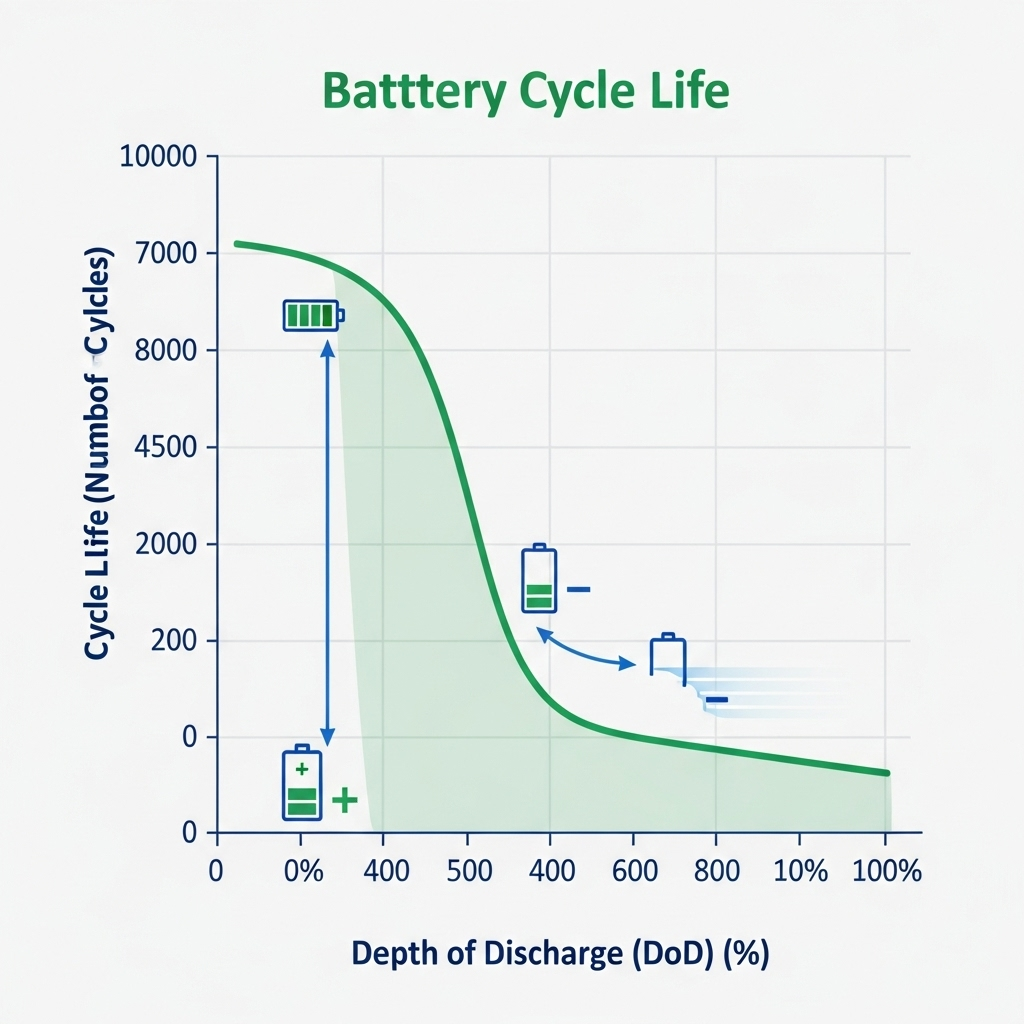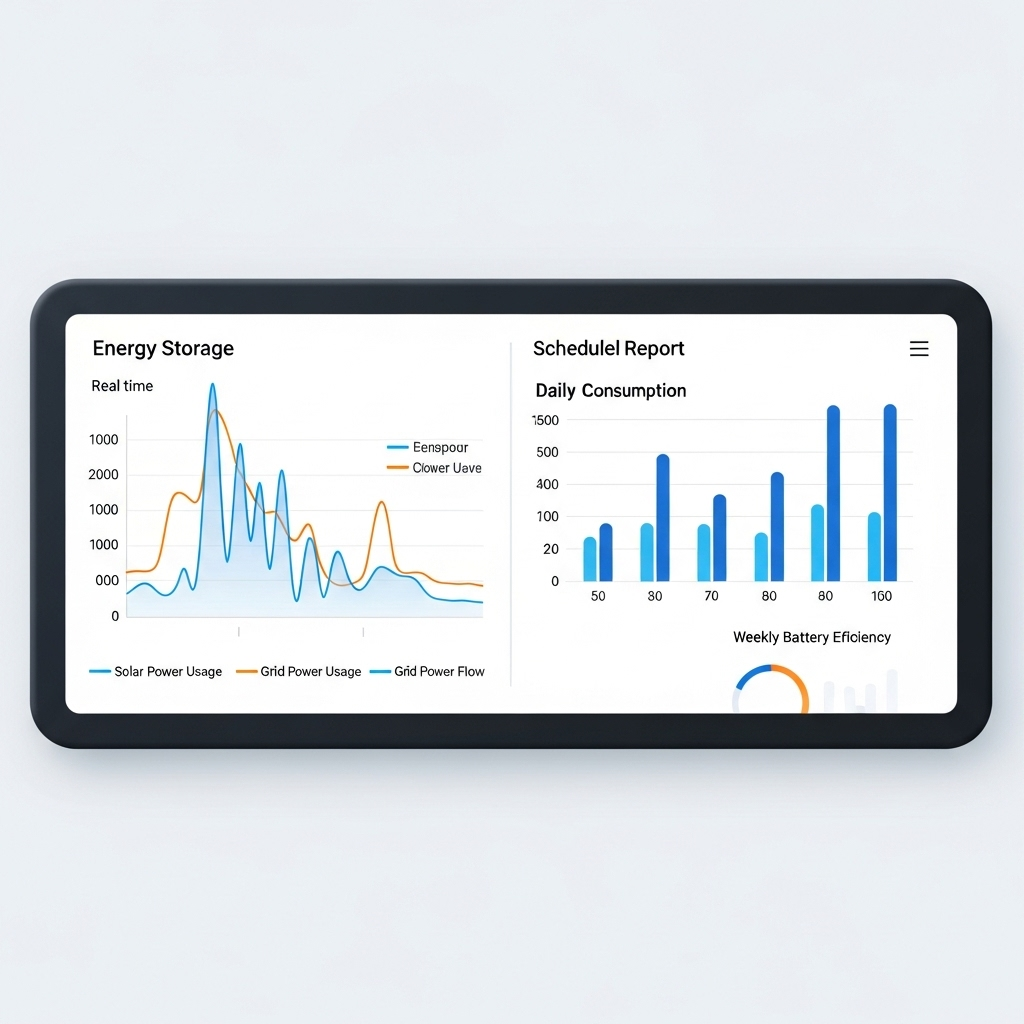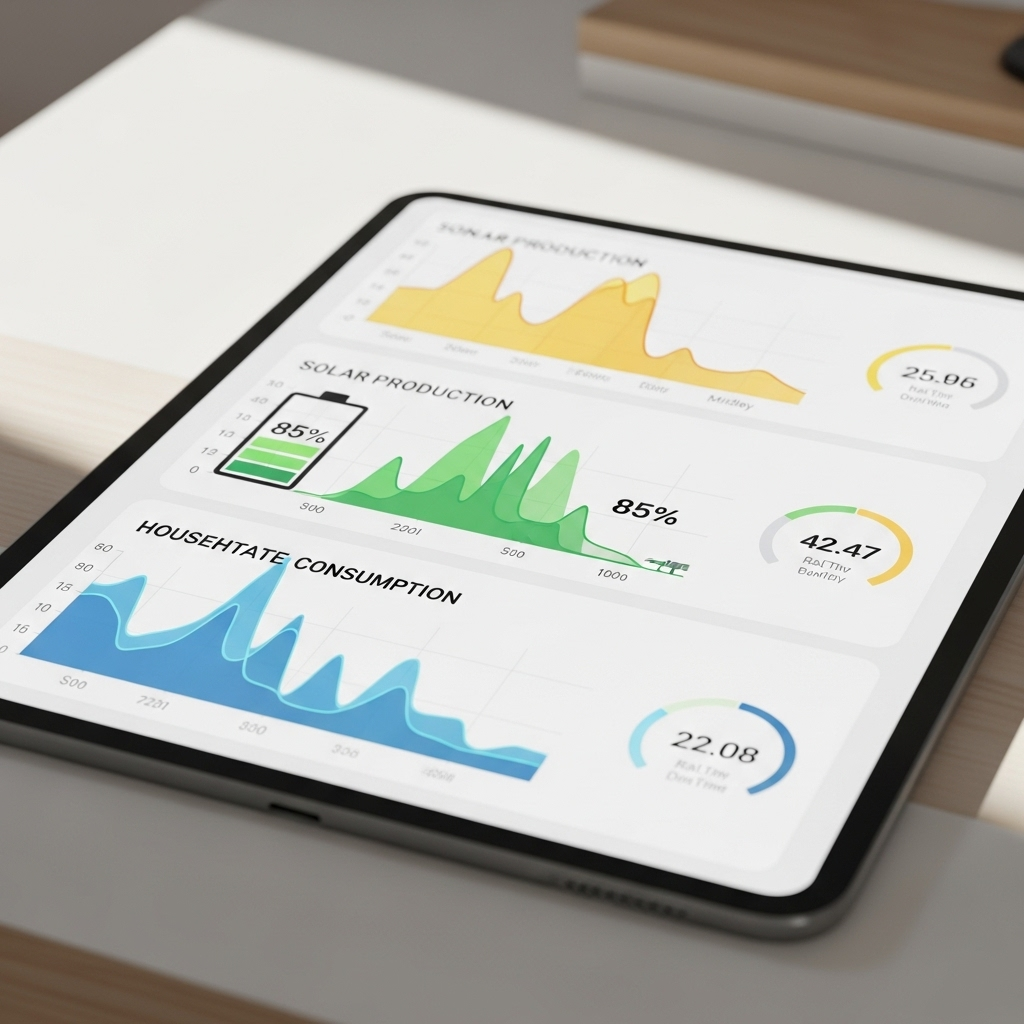Your home energy storage system (ESS) is a significant investment in your energy independence. But to truly maximize its value and lifespan, you need to look beyond the initial installation. Monitoring key performance metrics is fundamental. By benchmarking your battery’s State of Health (SoH), Depth of Discharge (DoD), and operating temperature, you can proactively manage its performance, ensuring it operates efficiently for years to come. This data-driven approach transforms you from a passive user into an informed system owner.
Understanding State of Health (SoH): The True Age of Your Battery
Think of SoH as a measure of your battery's ability to hold a charge compared to when it was brand new. It's the most accurate indicator of its long-term viability, offering a clearer picture than its chronological age alone.
What is SoH and Why Does it Matter?
State of Health is expressed as a percentage. A new battery starts at 100% SoH. Over time, through normal use, this capacity gradually diminishes due to electrochemical processes. Monitoring SoH is critical because it helps you forecast the battery's remaining useful life and tells you if it's degrading faster than expected. A sudden drop could indicate an underlying issue that needs attention.
Benchmarking SoH: What's a Good Number?
For modern Lithium Iron Phosphate (LiFePO4) batteries, degradation is not linear. You might see a small initial drop, followed by a long period of very slow, stable decline. Most manufacturers provide a warranty that guarantees the battery will retain a certain SoH (typically 70-80%) after a specific number of years or cycles. Here are some typical benchmarks for a well-managed LiFePO4 system:
| Year of Operation | Expected State of Health (SoH) |
|---|---|
| Year 1 | 98-100% |
| Year 5 | 90-95% |
| Year 10 | 80-85% |
| Year 15+ | 70-80% |
Factors That Accelerate SoH Decline
Several factors can cause your battery's health to decline faster than normal. Consistently operating at high temperatures is a primary cause of accelerated aging. Likewise, frequently charging and discharging the battery at very high rates or leaving it at a 100% or 0% state of charge for extended periods can also contribute to premature degradation.
Depth of Discharge (DoD): Balancing Use and Longevity
Depth of Discharge refers to the percentage of the battery's total capacity that is used in a cycle. It's a critical setting that directly influences how many charge and discharge cycles your battery can endure over its lifetime.
Defining DoD and Its Impact on Cycle Life
There is a direct relationship between DoD and the total cycle life of a battery. A cycle where you use 90% of the battery's capacity (90% DoD) puts more strain on its components than a cycle that only uses 50% (50% DoD). Consequently, shallower discharge cycles lead to a much longer lifespan. Consistently pushing your battery to its maximum DoD will reduce the total number of cycles it can deliver.
Optimal DoD Benchmarks for Home ESS
For daily use in a solar self-consumption setup, an optimal DoD is between 80% and 90%. This provides ample energy for evening and overnight use without putting excessive strain on the battery. Many modern ESS allow you to set a 'reserve capacity', which effectively limits the DoD. For example, setting a 20% reserve means you are limiting the DoD to 80%. For a detailed analysis of how cycle depth affects battery life, the Ultimate Reference for Solar Storage Performance offers in-depth data and charts that can help you fine-tune your system for longevity.
How to Monitor and Control Your DoD
Your system's monitoring application is the best tool for home battery performance monitoring. Through the app, you can track your daily energy usage patterns and adjust the DoD settings. If you find you consistently have a large amount of energy left in the morning, you might be able to increase your DoD slightly to power more devices. Conversely, if you're draining it completely each night, you may want to reduce your DoD to preserve its health.
Temperature Ranges: The Silent Performance Killer
Temperature is one of the most significant environmental factors affecting battery performance, efficiency, and safety. Operating your ESS within its ideal temperature range is crucial for both immediate output and long-term health.
The Goldilocks Zone for Battery Operation
LiFePO4 batteries perform best in environments similar to what humans find comfortable. The optimal operating temperature range is typically between 15°C and 25°C (59°F to 77°F). When temperatures drop too low, the battery's internal resistance increases, which can reduce its capacity and ability to deliver power. When they get too high, chemical degradation processes accelerate, permanently reducing the battery's SoH.
Benchmarking Temperature: Critical Thresholds to Watch
Your battery management system (BMS) will protect the battery from extreme temperatures by shutting it down. However, even operating within the allowable-but-not-optimal ranges can impact its lifespan. Establishing clear testing protocols and benchmarking requirements is crucial for comparing product performance, a principle outlined by the IEA in its report, Transforming Global Markets for Clean Energy Products.
| Temperature Range | Impact on LiFePO4 Battery | Recommendation |
|---|---|---|
| > 45°C (113°F) | Significant degradation, potential safety risk | Cease operation, implement cooling |
| 25°C - 45°C (77°F - 113°F) | Accelerated aging | Monitor closely, ensure ventilation |
| 15°C - 25°C (59°F - 77°F) | Optimal Performance & Lifespan | Maintain this range |
| 0°C - 15°C (32°F - 59°F) | Reduced performance/capacity | Normal for some climates, expect lower output |
| < 0°C (32°F) | Charging is often disabled by BMS to prevent damage | Use a heated battery or install in a climate-controlled space |
Practical Tips for Temperature Management
Proper installation is the first line of defense. Placing the ESS in a garage, basement, or a well-ventilated utility room can protect it from extreme outdoor temperatures. Ensure there is adequate clearance around the unit for air to circulate, preventing heat buildup. If you live in a climate with extreme heat or cold, consider systems with active thermal management.
Your Data-Driven Path to Energy Independence
Understanding the benchmarks for SoH, DoD, and temperature empowers you to take control of your energy future. These metrics are interconnected; high temperatures can worsen the impact of a high DoD, which in turn accelerates SoH decline. As noted in the IEA's Next Generation Wind and Solar Power report, battery storage systems are a key technology for optimizing energy use at the household level. By actively monitoring this data, you are not just observing your system—you are managing it. This proactive approach ensures your ESS remains a reliable, efficient, and long-lasting cornerstone of your home's energy system, moving you closer to true energy independence.
Frequently Asked Questions
How often should I check these metrics?
A quick weekly check-in via your monitoring app is sufficient for most users. This helps you spot any immediate anomalies. A more detailed monthly review of the data can help you identify long-term trends in performance and health. If your system allows, set up alerts for critical temperature thresholds.
My battery's SoH dropped by 2% in its first year. Is this normal?
Yes, a small drop in SoH during the first year is typical as the battery chemistry settles. For LiFePO4 batteries, a decline to around 98% SoH is within the normal range. The rate of degradation should slow considerably after this initial period if the battery is managed properly.
Can I improve my battery's SoH once it has degraded?
No, State of Health degradation is an irreversible chemical process. You cannot restore lost capacity. However, by carefully managing your Depth of Discharge and operating temperatures, you can significantly slow the rate of future degradation and get the maximum possible lifespan from your unit.
What is the difference between State of Charge (SoC) and Depth of Discharge (DoD)?
They are two sides of the same coin and always add up to 100%. State of Charge (SoC) measures how full your battery is (e.g., 90% full). Depth of Discharge (DoD) measures how much capacity has been used (e.g., 10% discharged). If your SoC is 75%, your DoD is 25%.





Leave a comment
All comments are moderated before being published.
This site is protected by hCaptcha and the hCaptcha Privacy Policy and Terms of Service apply.